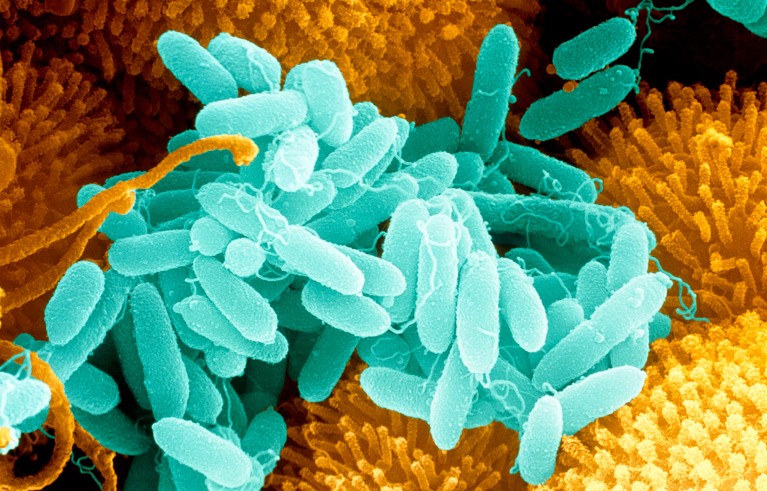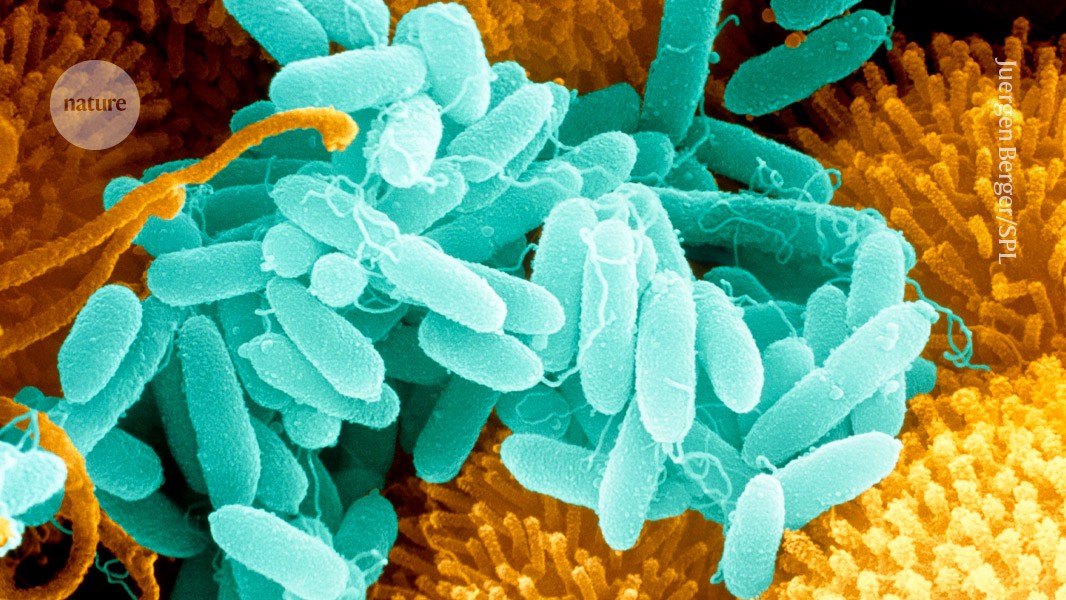
Pseudomonas aeruginosa bacteria (blue) is harmful to people and often found in hospitals.Credit: Juergen Berger/Science Photo Library
A strain of bacterium that often causes infections in hospital can break down plastic, research published this week in Cell Reports reveals1.
Researchers in the United Kingdom identified an enzyme, which they called Pap1, in a strain of Pseudomonas aeruginosa isolated from a wound. They found that the enzyme can break down a plastic that is commonly used in health care because of its biodegradable properties, called polycaprolactone (PCL).
Until now, the only enzymes shown to break down plastics were found in environmental bacteria, says study co-author Ronan McCarthy, who researches bacteria and bacterial infections at Brunel University in London. He says that finding the same ability in pathogens often present in hospitals could explain why these microbes persist in these environments. “If a pathogen can degrade plastic, then it could compromise plastic-containing medical devices such as sutures, implants, stents or wound dressings, which would obviously negatively impact patient prognosis,” he adds.
Enzyme expression
As part of their study, McCarthy and his colleagues inserted the gene that codes for the enzyme into Escherichia coli bacteria. When they made the bacteria express the enzyme, they found that it broke down the PCL in agar or beads. The strain of P. aeruginosa taken from the wound was also able to digest PCL agar and beads. And when the researchers created a mutant where the gene that coded for the Pap1 enzyme was deleted from the P. aeruginosa, the bacterium was unable to degrade the plastic.
The team also found that the enzyme increased the amount of biofilm formed when P. aeruginosa was exposed to the plastic as compared with glass beads. When bacteria produce high levels of biofilm, antibiotic resistance can increase, leading to difficult-to-treat infections. The team also conducted experiments in greater wax moth (Galleria mellonella) larvae and found that the bacterium was more harmful when a PCL implant was present, compared to when the implant was absent. Additionally, moths infected with bacteria lacking the enzyme had similar survival rates regardless of whether a PCL implant was present or not.


